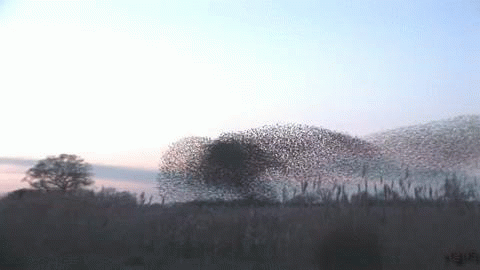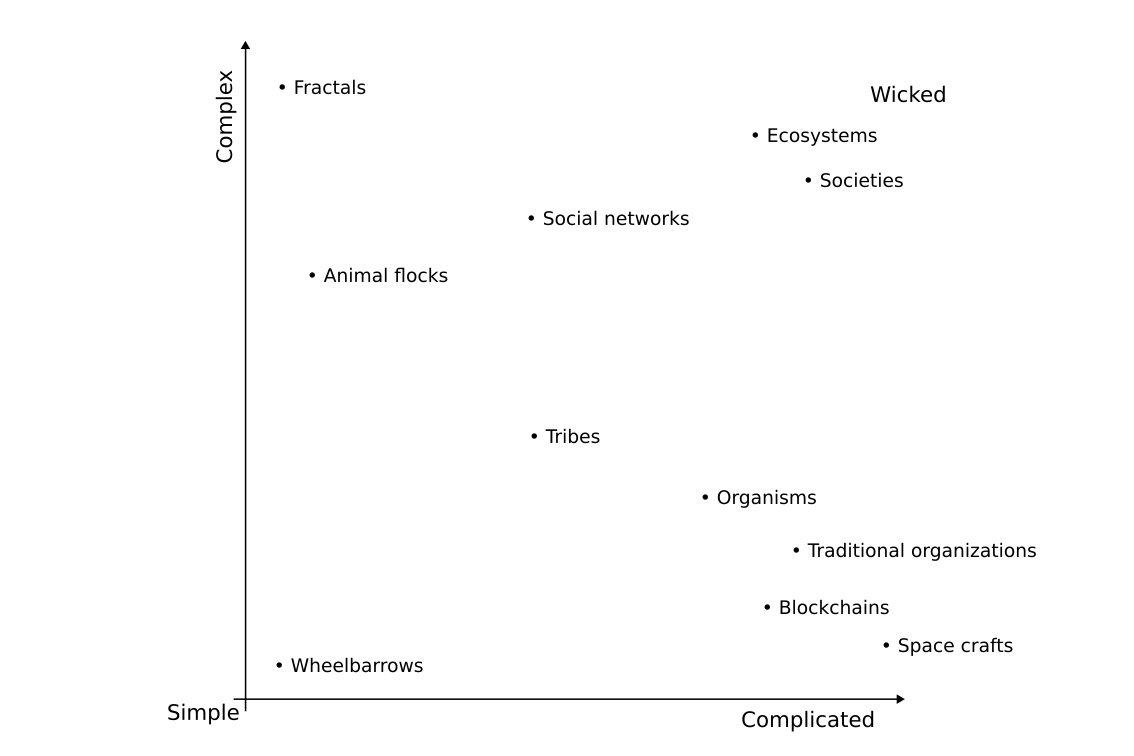An intro to complex adaptive systems
Complexity science Systems thinking Wicked problemsThe world is an interesting place, and oftentimes when we learn more about it we also learn that we know so little about it. This is especially true when trying to understand how we as humans interact, and in turn affect both each other and the world. It seems like we actually have a quite poor understanding of how our global socio-economic system works, and an even smaller comprehension of how we should go about changing it (e.g. coordinate around mitigation strategies for climate change). One very useful concept in approaching these kind of problems though is the study of complex adaptive systems. In this article we are going to explore what they are and why it is a useful concept to understand.
Different types of systems #
Let us first take a look at simple systems. These systems are easy to understand, and by simply looking at one you can grasp what makes such a system work. Examples include things like lamps, wheelbarrows, guitars, etc. You can probably come up with thousands of different simple systems yourself.
Next we have complicated systems. This is where human ingenuity starts to show its potential in terms of the technology that we build. Complicatedness is also the way to describe some forms of organisms. The main characteristic of these systems is that they can be reduced to lots of parts, and by studying these parts the entire system can be understood. This means that one or multiple people can study the system, potentially by conducting various experiments, and come up with a complete description of the system. Complicated systems can be exemplified by electricity grids, space crafts, computers, blockchains, etc.
Complex systems are different. They are made up by a number of often very simple parts, sometimes referred to as agents, that when interacting make up a system that exhibits novel characteristics (a fenomena often refered to as emergence). This essentially means that a complex system can not be understood by studying its parts. It also means that they have to be studied from multiple perspectives since one perspective is likely to yield a description that is too reductionistic. Our ability to predict the future states of a complex system is also very limited. Instead the only thing that can decided is general dynamics of the future states. Some examples are flocks of animals, social networks, fractals, immune systems, etc.

In a flock of starlings, all birds can be considered to be agents that act based on the information they get from their neighbours. The flock is the complex system that emerges from the simple behaviour logic in each bird.
We can view these systems in relation to each other by putting them on a plane where one dimension represents the amount of complexity and the second dimension complicatedness. On this plane we can now map out where different real world systems would be. Systems that have a large amount of both complicatedness and complexity are often referred to as wicked since they are so difficult to reason about and effectively change. Using this map its also possible to make more fine-grained distinctions between different types of systems by categorizing different regions on the map, but we’ll not dive into that here.

Different systems as they are placed in the complexity/complicatedness map.
Adaptability #
All complex systems are not adaptable. However a complex adaptive system (CAS) can respond to changes in the environment that is external to the system. Couldn’t a complicated system also do this? Yes, but it can only respond to changes that it has been designed to respond to. A CAS can respond and adapt to changes in its environment that are unexpected or novel. How can it do this? If we think about the parts of the CAS as agents we can say that each agent can by themselves respond to a change in external conditions. New or different behaviour of the agents in the system means that the properties of the emergent system changes as the agents relations to each other changes.
An example of system that has adaptive capacity is a tribe. The tribe has a set of traditions that it follows when suddenly one day there is an earthquake that drastically changes the landscape. Some members of the tribe quickly realizes what needs to be done to help others that were hurt by the quake, others go out scouting for new places to live, some third group starts preparing for moving resources. All while communicating asynchronously with each other. There is no explicit leader of all of this collective action, however there might be some leadership qualities displayed in the smaller groups. Eventually the tribe will be settled in a new home environment with various new traditions that emerged to deal with the aftermath and potential new earthquake threats.
Why are CAS a useful concept? #
When designing a solution to a problem it is easy to just take a simplistic view and end up with a complicated solution as a result. There is nothing wrong with complicatedness per se, but such systems are often not very flexible when new conditions arise. Also, if there are a lot of components that rely on each other to remain the same a complicated system might not be very stable. Thinking about a problem and its potential solutions in terms of complex adaptive systems forces us to consider multiple perspectives and if done right come up with a solution that is broad and addresses the root cause of the problem. Essentially CAS are a tool for analysing and changing the world around us in a more thoughtful and efficient way.